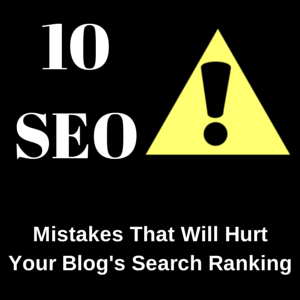As we strive to create new content for our audiences, it’s easy to forget about our existing content. Our existing content is filled with incredible ideas, and the more content you create, the bigger your library of content is.
You must continually update this library not just by adding more content, but by updating your existing content. Updating your existing content is an easy way to boost the value you provide while giving you an edge on search engines.
Not only that, but now the old piece of content becomes new again. People have another reason to check it out.
When you update your old content, you shouldn’t just add more value. You should also optimize it. That updated piece of content should drive traffic to your newer pieces of content that aren’t doing as well.
Optimizing your content for success isn’t just about optimizing that one post. It’s about optimizing that piece of content for its own success and the success of some of your other content.
Let’s take a deep dive into optimizing old content for more success.
Bulk It Up
When most people think about optimizing their old content for success, they think about bulking it up. This is important on multiple levels.
From a reader’s standpoint, adding more content to an existing piece of content almost always means more value. If I add an extra 500 words to this blog post, it will enhance the value of the blog post.
When you bulk up, always stay on topic. My favorite way of doing this is to skim through the blog post and ask myself, “What did I miss? How could I have made this better?”
Those questions allow ideas to flow through my mind and the words come out naturally. As you bulk up your content, consider everything else from this blog post.
Include Multiple Forms Of Media
You need more pictures within your content. I wasn’t so good at putting pictures in my blog posts so I delegated that step.
I will soon incorporate more than just pictures. In fact, you’ll soon see more embedded videos within my blog posts.
Some of those videos will be mine while other video will be from other people. The reason for video is very strategic.
The first reason is that video is very engaging. It’s the most engaging form of content we can possibly create.
The second reason is that the time you spend on my blog will dramatically increase. My blog in a sense becomes, in part, a hyper-targeted YouTube. If you watch a three minute video on my blog, that increases the time you spend on my site.
If you click on one of the suggested videos that shows up, then you spend even more time on my site.
This isn’t just important from an SEO standpoint, but it’s even more critical from a trust standpoint. If an engaged reader consumes my content for two hours, I know I’ve earned that person’s trust.
You don’t spend two hours on the same blog unless you greatly appreciate the blog, and more importantly for the relationship, the blogger (in this case being me).
Use Inbound and Outbound Links
Incorporating multiple forms of media and bulking up your content will give your existing content the set-up to thrive. Utilizing inbound and outbound links allow you to spread the wealth.
Inbound links are links to your own blog posts. If I include a link in this blog post to one of the other blog posts on this site, that’s an inbound link.
If I link to any outside site like Jeff Bullas’ Site or Forbes, that’s an outbound link.
Both are important.
The inbound links, assuming they are relevant based on the content’s topic, will keep people on your blog longer. This builds SEO, but again, I value this tactic more for the trust building.
Outbound links give your audience relevant articles beyond your content and sends search engines a signal. This content creator promotes these awesome sites we already like. We should boost this person’s search engine rank as well.
Use them throughout your content to give your visitors more options and more reasons to stay on your blog longer.
Optimize The Post For SEO
This is the most interesting tactic on the list because the way you optimize depends on a few factors. Some of your content is better optimized than others, and the level of existing optimization determines your workload.
I currently use the Yoast plugin for optimizing my blog posts. I will focus on a keyword, write a meta description with that keyword in mind, and even adapt the title around that keyword.
Some of my blog posts were published before I knew or used any of these tactics. These blog posts would require an SEO overhaul because I’d have to perform all of these steps. For other blog posts that are already optimized, I can optimize for a second or even a third keyword as well.
My one recommendation is to avoid changing the title, even if it’s not fully optimized. People know that piece of content for its title. In a similar fashion, avoid changing any part of your blog post’s permalink which is basically anything that appears after the slash line after .com
For instance…
yoursite.com/permalink
Don’t change that link in anyway because it will have a very negative effect on your SEO.
In Conclusion
Updating your existing content is more than checking for flaws and correcting them. It’s about enhancing the experience that piece of content provides for your audience.
This new experience you provide can significantly boost engagement, the amount of time people spend on your site, and your search engine ranking.
Once you update an existing piece of content, share it with your audience. Tweet about it, pin it, Instagram it, and do anything else that you desire. You may even want to consider leveraging your email list if there’s space for your updated content in your emailing calendar.
I recommend you update at least one of your blog posts each week. It isn’t too much of an ask, and you won’t see significant results right away, but it’s enough to accumulate results over time.
What are your thoughts about updating your existing content? Do you have any tips for us? Do you have a question for me? Sound off in the comments section below.




